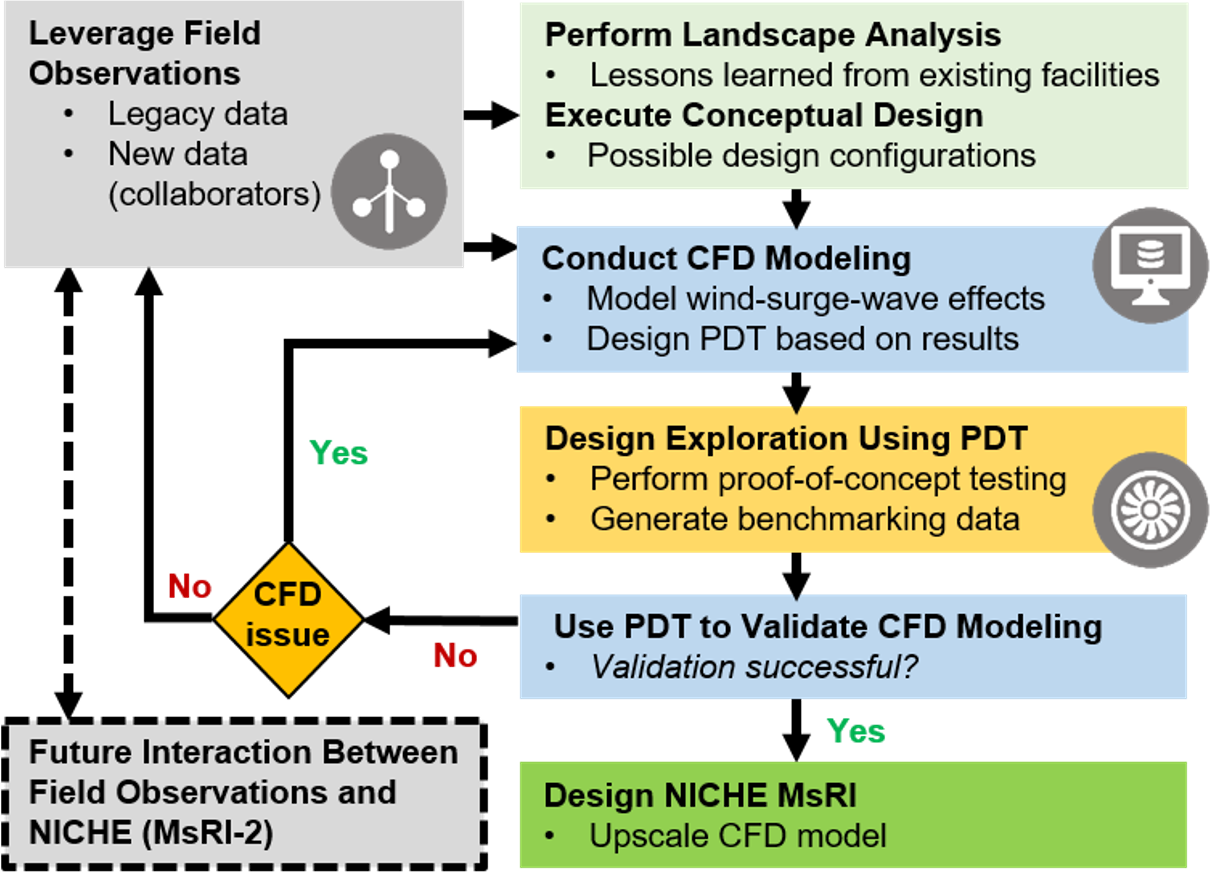NICHE
Design Methodology and Scientific Objectives
NICHE is currently being designed using a convergence approach led by a multidisciplinary team of experts with demonstrated excellence in their respective disciplines and methodologies, with experience crossing over disciplinary boundaries to further natural hazards research. The team will demonstrate proof-of-concept using an integrated design testbed (IDT) that leverages field observations, a suite of physical experiments, and advanced computational fluid dynamics (CFD) models.
The suite of physical experiments at smaller-scale facilities will generate valuable single-phase and multi-phase combinations of wind and waves to calibrate high-fidelity CFD simulations. As such, the IDT will enable a combined cyber-physical design process, essential to minimize the risk in NICHEs future implementation, providing a critical proving ground to (1) reconcile several scientific and practical challenges associated with simultaneous generation of wind and water hazards in a single research infrastructure, (2) validate computational models of the interaction between waves and wind that can then inform the design of the full-scale NICHE, and (3) explore design trade-offs to provide the greatest scientific return on a given investment. The IDT will also design the non-physical aspects of NICHE: the infrastructure enabling convergence research, including the workforce development and stakeholder engagement programming that will enable NICHE to achieve its intended impacts on society. This results in a multi-faceted design process with the following scientific objectives:
Objective 1: Integrative Design and Assessment
Use the integrated design testbed (IDT) to create Project Execution Plan (PEP) and implementation-ready design for a full-scale NICHE facility with sufficient scope and capacity to simulate the effects of interacting coastal and wind hazards (whether the latter be synoptic or non-synoptic in nature) and demonstrate the facilitys operational feasibility and technical readiness for future implementation.
Objective 2: Research Capacity Development
Develop a convergent research infrastructure to enable users of the full-scale NICHE to effectively integrate their physical testing with computational simulations and field observations to foster breakthroughs in climate-adaptive design and mitigation and with demonstrated impacts on selected testbed communities.
Objective 3: Workforce Development
Create and pilot a robust curriculum to train NICHE users at all levels in convergent research methods that deeply engage communities and stakeholders to achieve broad impact to facilitate the development of a next-generation workforce trained to address societal challenges associated with climate-driven hazards.
Objective 4: Stakeholder Engagement
Develop a policy learning tool kit and engagement protocols to advance a stakeholder engagement plan that models the effective engagement of institutional and community stakeholders to drive and ultimately translate NICHEs future research discoveries into policy and practice.






